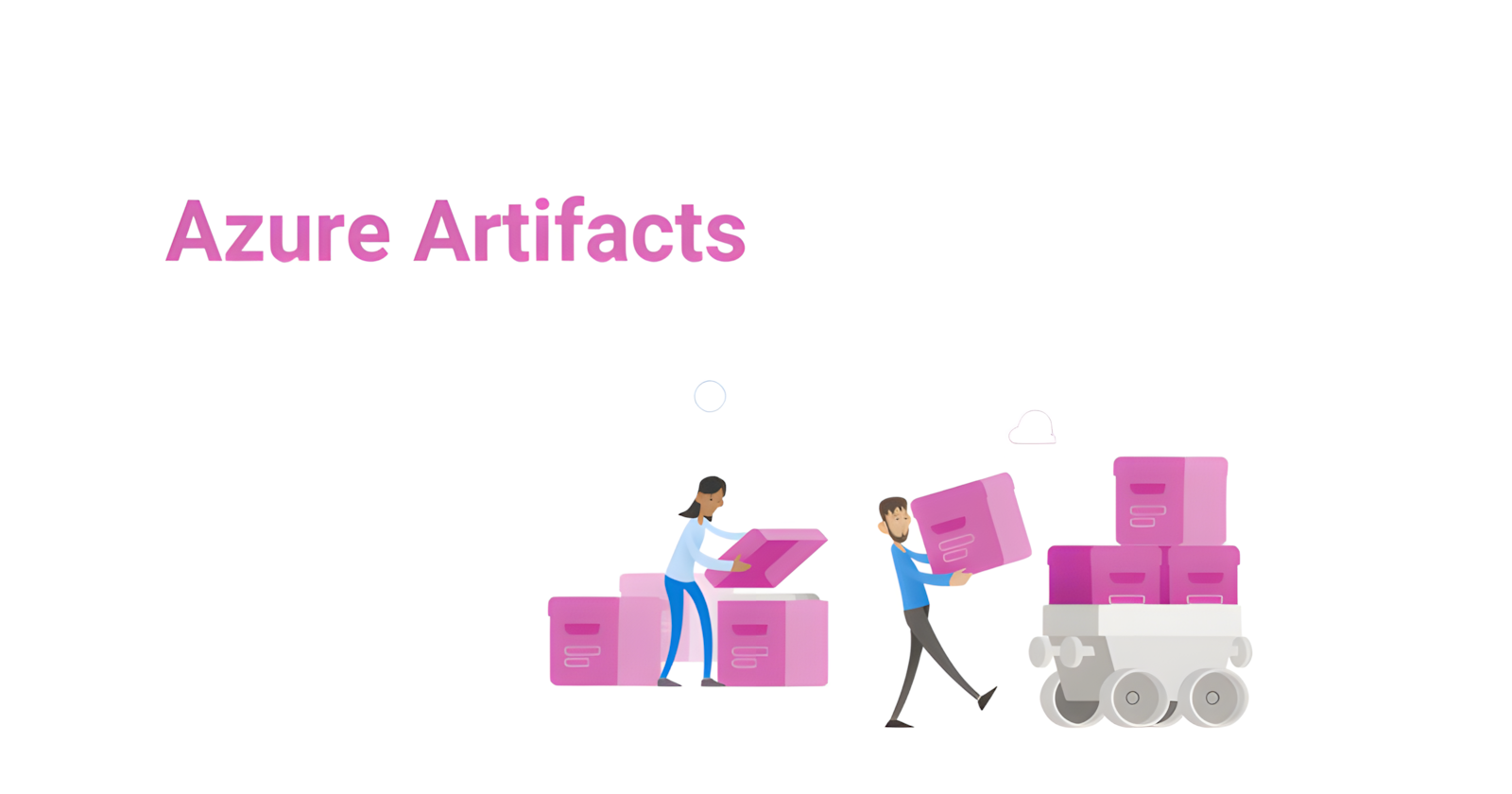A Comprehensive Guide to Managing Artifacts in Azure DevOps
 Jayachandra Rapolu
Jayachandra Rapolu
In today’s fast-paced development world, maintaining smooth workflows is essential for delivering high-quality software. One key aspect of that workflow is managing artifacts - components like libraries, binaries, dependencies, and configuration files - that are shared across different stages of development and deployment. In Azure DevOps, artifacts play a pivotal role in this process, serving as the building blocks that enable teams to create, test, and deploy software in a reliable and scalable manner.
In this blog, we’ll explore what artifacts are, why they matter, and how you can effectively manage them within Azure DevOps to streamline your DevOps pipeline.
What Are Artifacts in DevOps?
Artifacts in DevOps refer to any files, libraries, packages, or configurations generated as part of the build and deployment processes. These artifacts are often reused in various stages of the software lifecycle - whether for testing, integration, or deployment. Examples of artifacts include:
Compiled binaries or libraries
Docker images
NuGet packages
JAR files
Configuration files (e.g., JSON, YAML)
Deployment scripts
Helm charts
The Role of Artifacts in Azure DevOps
In Azure DevOps, artifacts are primarily stored and managed through Azure Artifacts, which is a service within Azure DevOps used for hosting, sharing, and versioning these files. Azure Artifacts allows development teams to share and reuse code components and dependencies, making collaboration and automation much easier.
Azure DevOps integrates artifacts into the CI/CD pipeline, where they act as the intermediary between different phases of the development cycle, including:
Build pipeline: Artifacts are created during the build process when source code is compiled or packaged.
Release pipeline: Once artifacts are built, they are deployed to different environments, such as development, staging, or production.
Testing: Artifacts are also used during testing phases to ensure that the right versions of dependencies are available, and that the application behaves as expected.
Why Artifact Management Matters
Effective artifact management is crucial for several reasons. Let’s break down why managing artifacts in Azure DevOps matters:
1. Improved Versioning and Dependency Management
Artifacts often evolve over time, and different versions of an artifact may need to be deployed or tested in different environments. Azure Artifacts enables teams to version artifacts, ensuring that developers and operations teams can access the right version at the right time.
For example, a specific version of a library or tool might be required for a particular application build, and using Azure Artifacts, you can track and store these dependencies with precise version control. This avoids “dependency hell,” where mismatched versions of libraries cause compatibility issues or failures.
2. Reusability and Consistency
Managing artifacts allows you to create a consistent and reliable development pipeline. By reusing the same set of artifacts in multiple stages of the lifecycle (e.g., from build to test to production), you ensure that all environments are aligned. This consistency reduces the chance of errors that might arise when different teams or systems are using different versions of an artifact.
With Azure Artifacts, teams can manage both internal and external dependencies (e.g., open-source libraries or third-party packages) in a centralized manner. This leads to fewer manual interventions and a more automated process.
3. Collaboration and Sharing Across Teams
In large organizations, multiple teams might be working on different parts of a software product. Having a centralized repository of artifacts enables better collaboration, as teams can share pre-built packages and avoid redundant work. Developers can simply pull the needed artifacts from Azure Artifacts, ensuring that they are using the correct versions.
Additionally, Azure Artifacts supports integration with popular package managers like NuGet, npm, Maven, and Python, making it easy to share and consume packages across different languages and ecosystems.
4. Security and Compliance
Managing artifacts also helps ensure compliance with security requirements. By controlling access to artifacts (through Azure DevOps permissions and security policies), you can ensure that only authorized users or systems can access and deploy critical components. This is especially important when working with sensitive code or proprietary packages.
Moreover, Azure Artifacts tracks who uploaded or modified an artifact, providing an audit trail that can be used for security reviews or compliance audits. This is a key feature for organizations that need to comply with industry regulations (e.g., healthcare, finance).
5. Faster Releases and Faster Rollbacks
With proper artifact management, you can accelerate the release cycle by easily reusing previously created artifacts. This speeds up the continuous integration and continuous delivery (CI/CD) pipeline, reducing the time it takes to go from code commit to production deployment.
Additionally, if a problem arises after a release, having a repository of artifacts means you can quickly roll back to a previous, stable version of the artifact, reducing downtime and potential issues in production.
How to Manage Artifacts in Azure DevOps
Now that we’ve established why artifact management matters, let’s take a look at how you can manage artifacts effectively in Azure DevOps.
1. Set Up Azure Artifacts Feed
To start managing your artifacts in Azure DevOps, you first need to create an Azure Artifacts feed. A feed is essentially a container that holds your packages. You can create a new feed by navigating to Artifacts in your Azure DevOps project, and then clicking New Feed.
2. Publish and Store Artifacts
Once your feed is set up, you can start publishing your artifacts. This process typically happens automatically during the build pipeline, where artifacts are packaged and pushed to the Azure Artifacts feed.
For example, in a build pipeline for a .NET project, you can publish NuGet packages like this:
- task: NuGetCommand@2
displayName: 'Publish NuGet packages'
inputs:
command: 'publish'
packagesToPublish: '$(Build.ArtifactStagingDirectory)/**/*.nupkg'
feedPublish: '<Your Feed URL>'
This will push the resulting NuGet packages to the Azure Artifacts feed, where they can be reused in future builds or deployments.
3. Consume Artifacts in Pipelines
After publishing your artifacts, you can consume them in subsequent build or release pipelines. You can reference the artifact in the pipeline YAML file or through the Azure DevOps UI. For example, in a release pipeline, you can download the artifact like so:
- task: DownloadBuildArtifacts@0
inputs:
artifactName: 'drop'
downloadPath: '$(Release.ArtifactsDirectory)'
4. Implement Versioning
As mentioned earlier, versioning is essential for artifact management. Azure Artifacts supports semantic versioning, so each time you publish a new artifact, it gets assigned a unique version number. You can configure your pipelines to increment version numbers automatically based on a versioning strategy (e.g., using Git tags or build numbers).
5. Configure Access Control and Permissions
Azure Artifacts allows you to control access to feeds by configuring permissions for users and groups. You can set up granular access policies, such as allowing certain users to only download packages but not publish them, ensuring the right level of security for your artifacts.
6. Clean Up Old Artifacts
As your development process progresses, old artifacts may accumulate and take up unnecessary space. Azure Artifacts provides retention policies that allow you to automatically delete older versions of artifacts based on certain criteria, like age or usage frequency. This helps keep your feed organized and prevents it from becoming cluttered with obsolete artifacts.
Conclusion
Effective artifact management in Azure DevOps is crucial for maintaining consistency, enabling collaboration, ensuring security, and improving the overall quality of your software delivery process. By leveraging Azure Artifacts, you can centralize and automate artifact storage, versioning, and sharing across teams, ultimately accelerating your CI/CD pipelines and reducing friction in the development lifecycle.
With the right practices in place - such as versioning, security controls, and automation - you can make your DevOps processes more efficient, reliable, and scalable. Whether you’re managing code libraries, Docker images, or deployment configurations, Azure DevOps offers the tools to manage your artifacts with ease and precision.
Subscribe to my newsletter
Read articles from Jayachandra Rapolu directly inside your inbox. Subscribe to the newsletter, and don't miss out.
Written by
